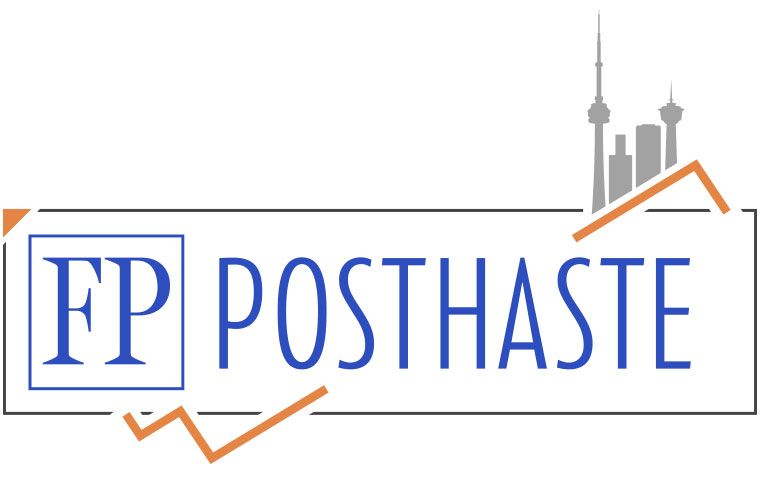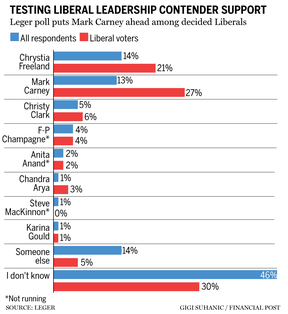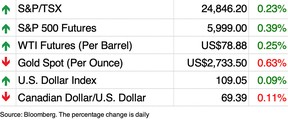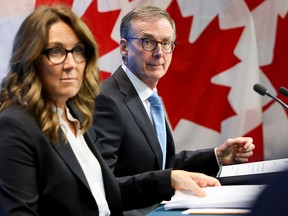Period following the Great Financial Crisis was an ‘aberration,’ says analyst
Article content
Article content
Article content

Remember the “new normal” after the great financial crisis? One analyst thinks it’s over and we’re heading back to the “old normal,” which ultimately means a world with more volatility and higher interest rates and a lower Canadian dollar, but with some silver linings, suggests Karl Schamotta, chief market strategist at Corpay Inc.
“The excess global liquidity that was previously suppressing interest rates and raising asset values is now beginning to shrink, and so that means that interest rates should settle closer to their long-term averages” in the range of about 4.82 per cent, he said, basing that number on 10-year United States Treasury yield data going back to 1790.
Advertisement 2
Article content
The Bank of Canada has currently set its benchmark lending rate at 3.25 per cent, with the market expecting another cut when policymakers meet on Jan. 29.
Most economists are betting on rates falling to the lower end of the Bank of Canada’s neutral range of 2.25 per cent to 3.25 per cent, but Schamotta reminds us that it’s the U.S. Treasury markets that set lending rates for things such as mortgages.
“The reality is that although the Bank of Canada does set benchmark policy rates in Canada, the global cost of borrowing is set in the United States,” he said. “It wouldn’t be a shock if we were to oscillate around the long-term average for 10-year Treasury yields.”
So, what was the new normal and should we be sad that it’s over?
The term, resurrected from the early 1900s by McKinsey & Co., was reportedly popularized by famous bond investor Bill Gross of Pacific Investment Management Co.
It was used in the wake of the global financial crisis to describe a global economy of sluggish demand, weak productivity in Western nations and “a glut of savings” flooding into financial markets from China and other developing countries.
Article content
Advertisement 3
Article content
“And then, of course, you had the central banks being really interventionist, repeatedly sort of reaching for those unconventional policy tools and driving interest rates down,” Schamotta said.
U.S. Federal Reserve and Bank of Canada rates fell to 0.25 per cent in the aftermath. As a result, the new normal wound up pushing down inflation and economic volatility as well.
From Schamotta’s perspective, the pandemic was the first event in a series to shake the foundations of the new normal, followed by interest rate hikes to combat a massive surge in inflation and the war in Ukraine.
“All (that) combined elevated level of geopolitical instability (to) bring that era to an end,” he said. “And I don’t think investors have fully incorporated a more volatile future into their forecasts or into their underlying assumptions yet, but I think it is becoming so.”
Schamotta sees a more fragmented world economy ahead, where the movement of goods is interrupted due to geopolitical events as well as government policies such as tariffs, subsidies that favour domestic over foreign companies and restrictions on the movement of money.
Advertisement 4
Article content
As a result, investors could be looking at more volatility and inflation, but he doesn’t think it’s all bad news, especially for the Canadian dollar and homeowners.
Schamotta said the Canadian dollar will remain “weak” — it is currently around 69.5 cents U.S. — but a weak loonie is “historically normal,” and “so we may be correcting a period of overvaluation in the Canadian dollar now.”
He said that is good for Canada since an elevated currency encourages people to spend more than they can afford, and a “Canadian dollar in line with Canadian fundamentals is a boost to the rest of the economy.”
Schamotta also said higher interest rates are more likely, meaning “asset prices are not outstripping” economic growth, so, for example, the cost of housing is not wildly outpacing the increase in people’s pay.
“I’m not going to sing Kumbaya here and say that it’s all brighter days,” he said. “But the broad point is that the aberration in human history might have been the period between the global financial crisis and the pandemic. I see what we might be getting back to is much more normal.”
Advertisement 5
Article content
Sign up here to get Posthaste delivered straight to your inbox.


Last month, former Bank of Canada governor Mark Carney appeared poised to become the country’s next finance minister. Now, he has an even bigger post in his sights.
On Thursday, Carney announced he will run to succeed Justin Trudeau as leader of the Liberal Party Canada, a contest that could elevate him within weeks to the post of prime minister — if only until a widely expected federal election.
Carney’s official entry into the Liberal race will come after months of speculation about his political ambitions following a notable career in finance and central banking. — Naimul Karim, Financial Post
Keep reading to find out more about the man who could be Liberal king.

- Bank of Canada publishes report on exceptional policy actions taken in response to the COVID-19 pandemic
- Today’s data: U.S. housing starts and buildings permits, plus industrial production and capacity utilization. Statistics Canada releases international securities transactions for November
- Earnings: Lithium Americas Argentina, Schlumberger NV
Advertisement 6
Article content




Kelley Keehn, co-founder of Moneywise Institute, talks with the Financial Post’s Larysa Harapyn about how Canadians can stick to their financial resolutions for 2025. Watch the video here.
Calling Canadian families with younger kids or teens: Whether it’s budgeting, spending, investing, paying off debt, or just paying the bills, does your family have any financial resolutions for the coming year? Let us know at wealth@postmedia.com.
McLister on mortgages
Want to learn more about mortgages? Mortgage strategist Robert McLister’s Financial Post column can help navigate the complex sector, from the latest trends to financing opportunities you won’t want to miss. Read them here
Financial Post on YouTube
Visit Financial Post’s YouTube channel for interviews with Canada’s leading experts in economics, housing, the energy sector and more.
Today’s Posthaste was written by Gigi Suhanic, with additional reporting from Financial Post staff, The Canadian Press and Bloomberg.
Have a story idea, pitch, embargoed report, or a suggestion for this newsletter? Email us at posthaste@postmedia.com.
Bookmark our website and support our journalism: Don’t miss the business news you need to know — add financialpost.com to your bookmarks and sign up for our newsletters here.
Article content
Higher interest rates, lower dollar part of return of ‘old normal’
2025-01-17 13:00:27





